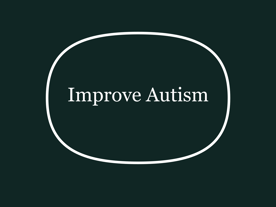Characterization of Intestinal Microbiota and Probiotics Treatment in Children With Autism Spectrum Disorders in China
Authors:
Niu, M., Li, Q., Zhang, J., Wen, F., Dang, W., Duan, G., Li, H., Ruan, W., Yang, P., Guan, C. and Tian, H.
Summary of study
This Chinese study revealed distinct intestinal microbiota differences between Chinese children with autism and non-autism children, with autism children exhibiting lower levels of beneficial bacteria. A 4-week treatment with a 6-strain probiotic (36 billion CFU/day) alongside ABA training significantly improved autism symptoms (e.g., communication, sociability, behavior) and GI symptoms, with effects observed by the end of the 4 weeks. While probiotics offer promising benefits with few side effects, the study's small sample size, short duration, and lack of blinding or placebo control suggest that larger, more rigorous trials are needed to validate these findings.
Key Findings
The study investigated the intestinal microbiota of 114 Chinese children with Autism Spectrum Disorder (ASD) and 40 neurotypical (NT) children, all aged 3-8 years. It also assessed the effects of a 4-week probiotics treatment combined with Applied Behavior Analysis (ABA) training compared to ABA training alone in a subset of the ASD group.
Microbiota Differences
ASD vs. NT Comparison: The intestinal microbiota of children with ASD differed significantly from that of NT children, regardless of gastrointestinal (GI) symptoms.
Diversity: The ASD group showed lower evenness (fewer diverse bacterial types) but higher abundance of certain bacteria compared to the NT group.
Phylum-Level Changes:
Lower levels of Bacteroidetes and Actinobacteria in the ASD group.
Higher levels of Proteobacteria and Firmicutes in the ASD group.
Genus-Level Changes:
Lower levels of beneficial bacteria such as Bacteroides, Bifidobacterium, Ruminococcus, Roseburia, and Blautia in the ASD group.
Higher levels of Lachnospira in the ASD group.
Probiotics Treatment Outcomes
Participants: 37 ASD children received probiotics plus ABA training, while 28 received only ABA training (control group).
Results: The probiotics group showed significant improvements in ASD symptoms and GI symptoms compared to the control group after 4 weeks.
Probiotics Used and Administration
Probiotics Composition: The treatment consisted of a lyophilized, water-soluble powder containing 6 bacterial strains (specific strains not specified in the study). Each strain provided 1 billion colony-forming units (CFU) per gram, with a total daily dose of 6 grams, equating to 36 billion CFU/day.
Administration: The probiotics were given orally as a powder, likely mixed with food or drink (exact method not detailed), for a duration of 4 weeks.
Symptoms Improved and Timeframe
ASD Symptoms:
Measured using the Autism Treatment Evaluation Checklist (ATEC).
In the probiotics group, 83.8% of children (31 out of 37) showed a decrease in ATEC scores, with an average reduction of 8.1 points.
Specific improvements included:
Speech/Language Communication: Enhanced verbal abilities.
Sociability: Better social interactions.
Sensory/Cognitive Awareness:
Improved sensory processing and awareness.
Health/Physical/Behavior: Greatest improvement in this domain, including reduced problem behaviors.
Children without GI symptoms had a higher improvement rate (86.7%) compared to those with GI symptoms (78.9%).
GI Symptoms:
Among the 22 children with GI symptoms in the probiotics group, 86.4% (19 out of 22) experienced a reduction in GI scores, dropping from a mean of 2.26 to 0.84.
Additional Improvements (Parent-Reported):
Behavioral enhancements (e.g., better eye contact, obedience) in 17 children.
Mood improvements (e.g., less crying, better compliance) in 18 children.
Better eating habits (e.g., improved appetite, less pickiness) in 19 children.
Improved sleep quality in 13 children.
Children with GI symptoms showed more pronounced behavioral and emotional gains, while those without GI symptoms had greater improvements in sleep and eating habits.
Timeframe: All improvements were observed after 4 weeks of treatment. The study does not specify when improvements began within this period, only that they were evident by the end.
https://pubmed.ncbi.nlm.nih.gov/31749754/
doi: 10.3389/fneur.2019.01084


